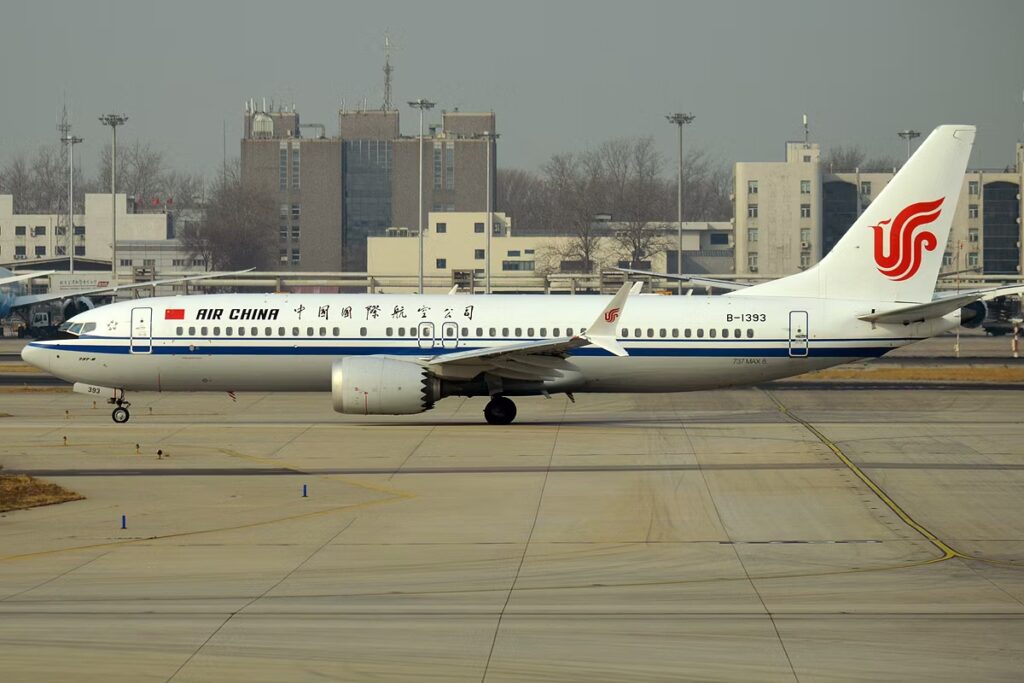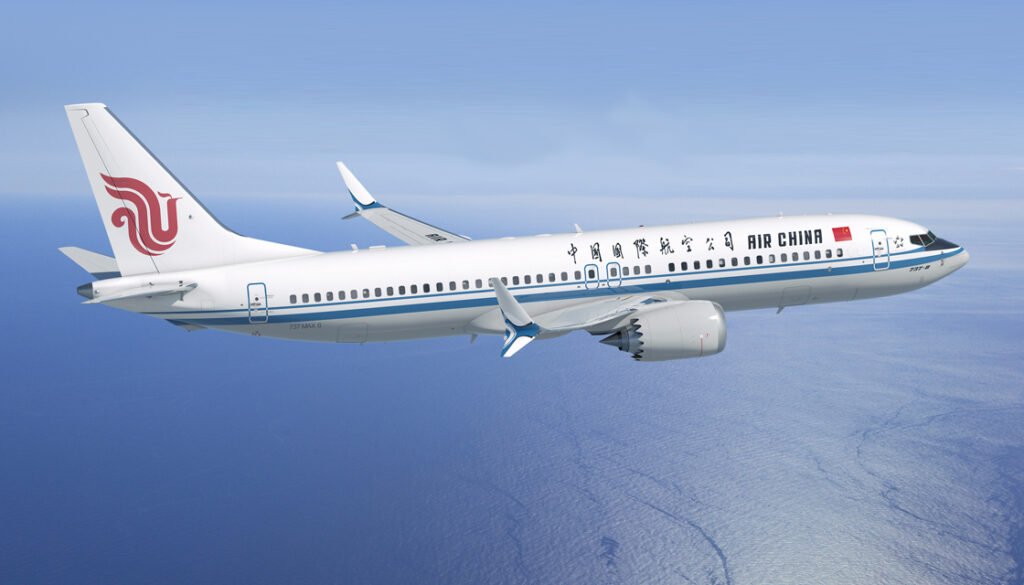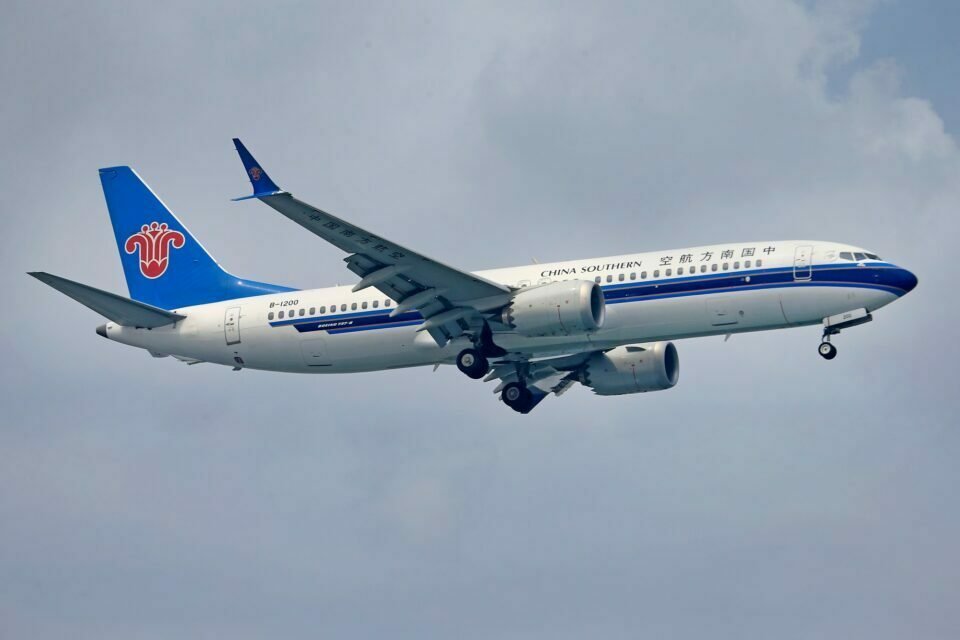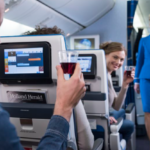The second deadly Boeing 737 MAX crash of the year occurred on March 10, 2019, when ET-AVJ, a Boeing 737 MAX operated by Ethiopian Airlines, crashed to the ground shortly after takeoff from Addis Ababa Bole International Airport in Ethiopia.
In order to ensure civil aviation flight safety in China, the Civil Aviation Administration of China (CAAC) had by the following day issued a notice “requiring domestic airlines to suspend the commercial operations of Boeing 737-8 aircraft by 6 pm based on the management principle of zero tolerance to potential safety hazards and strict control of safety risks.”

The notice ended, “Notification of restart of Boeing 737-8 commercial operations will be made after CAAC contacts FAA and Boeing and certifies effective measures are available to ensure flight safety. The first domestic Boeing 737 MAX flights started transporting people over three years later, yet the CAAC said nothing.
A China Southern Airlines flight made its way from Guangzhou Baiyun International Airport (CAN) to Zhengzhou Xinzheng International Airport on January 13, 2023. (CGO). The B-1206-registered aircraft was the first to transport people following the CAAC’s announcement in March 2019.
Air China, Hainan Airlines and its affiliate Fuzhou Airlines, Lucky Air, Shandong Airlines, and Shanghai Airlines are just a few of the airlines that have since followed in the footsteps of China Southern Airlines. According to data from ch-aviation.com, there are currently 25 Boeing 737 MAX aircraft, all of which are model 8s, flying in China and being used by seven different airlines.
After the Boeing 737 MAX was grounded in March 2019, China Southern Airlines was the first airline in China to use it.
The CAAC made a swift conclusion.
Within 24 hours of the Ethiopian Airlines crash, the Boeing 737 MAX was ordered grounded in China. The type of aircraft was the subject of intense anxiety at the time. Malindo Air received the first 737 MAX from Boeing in May 2017. A Lion Air 737 MAX with the registration PK-LQP and operating flight JT610 crashed into the Java Sea off the coast of Jakarta, Indonesia, less than a year later, in October 2018, shortly after taking off from Soekarno-Hatta International Airport (CGK).
In order to assist pilots in coping with uncommanded stabilizer trim movement, Boeing released a flight crew operating manual (FCOM) following the Lion Air incident and the United States Federal Aviation Administration (FAA) issued an emergency airworthiness directive (AD) prior to the Ethiopian crash.
The now infamous Maneuvering Characteristics Augmentation System was responsible for the uncommanded stabilizer trim movement in the two catastrophic crashes (MCAS). MCAS was a system implemented by the manufacturer, according to Boeing’s website, to offer “consistent airplane handling characteristics under a very particular set of unexpected flight scenarios.”

346 persons lost their life in all as a result of the two collisions.
The system initially depended on a single Angle of Attack (AoA) sensor to determine whether the aircraft was flying under manual flight conditions at a higher-than-normal angle. The 737 MAX’s nose was repeatedly cut down during both incidents as a result of the sensor supplying false information.
Boeing upgraded the MCAS to stop it from frequently activating and overriding the pilots’ commands, as well as to rely on both AoA sensors and act if both agree. In November 2020, the FAA unground the 737 MAX after making this and other concessions, including tightening its control over the certification of aircraft and altering the Organization Designation Authorization (ODA) in accordance with the Aircraft Certification, Safety, and Accountability Act (ACSAA).
China and Russia continued to be anomalies, despite the fact that many other agencies, such as the European Union Aviation Safety Agency (EASA), followed suit. Russian airlines have not used the 737 MAX since sanctions were placed on the country when it launched a full-scale invasion of Ukraine and prevented it from purchasing new aircraft. But things have been different in China. Only S7 Airlines previously owned a pair of 737 MAX aircraft.
On March 11, 2019, the CAAC made the swift decision to halt the type, and since then, there hasn’t been any exchange of information. The authority published a statement in May 2019 that outlined “three guidelines for restarting the operation of the Boeing 737 MAX-8.” The list calls for a re-examination of the aircraft’s airworthiness, necessary improvements to the aircraft and pilot training, as well as the abolition of any safety issues discovered during accident investigations.
The State Council Information Office held a news conference in March 2021 to discuss the status and growth of China’s air network as well as the “return to service” of the Boeing 737 MAX, the CAAC reported.
The CAAC said in September 2022 that it conducted a meeting with Boeing personnel in Zhoushan, China, to “evaluate the operation of the 737MAX” and “to carry out a complete examination of the aircraft type-based training standards for the enhanced 737 planes.” Also, Zhoushan is home to Boeing’s 737 MAX Completion and Delivery Center (C&DC), where local workers assemble interiors and apply liveries before delivering the aircraft.
The process for reintroducing 737MAX aircraft is almost complete, according to the statement. “CAAC will release the second revision of the Aircraft Evaluation Report on Boeing 737 Planes when the issues that have been discovered in the meeting are remedied,” it said. Return of the 737 MAX abruptly
The CAAC released a statement on its Chinese website on January 12, 2023, the day before China Southern Airlines’ 737 MAX transported passengers from CAN to CGO, reporting that the regulator’s Deputy Administrator Hu Zhenjiang had met with personnel at Beijing Daxing International Airport (PKX).
Zhenjiang reportedly went to PKX to “paid respects to the ground service and security checks that are on the front line of Spring Festival transportation security,” according to the announcement.
The Yunnan Regulatory Bureau gathered three transportation airlines involved in the additional certification of B737-8 aircraft in their jurisdiction and hosted this operation work exchange seminar, according to another notification issued on February 28, 2023.
The three airlines based in Yunnan, a province of China in the country’s southwest, reported on the status of the work related to the 737 MAX’s return to service, according to the CAAC website, while the administration “notified the specific risks of MAX aircraft operation, and required all airlines in the jurisdiction to make a good assessment in terms of training and risk control, and solidly promote safe operation.”

The CAAC concluded, “The Yunnan Regulatory Bureau will strictly review and verify the standards in the subsequent step and conduct review and verification in terms of aircraft modification and personnel qualifications to ensure that the certification work related to the resumption of commercial operations is stable and orderly.
Lucky Air, based in Yunnan province, operated a 737 MAX-8 on a commercial flight for the first time since it was grounded on February 25, 2023. The route connected Fuzhou Changle International Airport (KMG) with Kunming Changshui International Airport (KMG) (FOC).
Additionally, the province is home to China Eastern Yunnan Airlines, a subsidiary of China Eastern Airlines, which, according to data from planespotters.net, has six 737 MAX on order and three stored, as well as Kunming Airlines, which operates five of the type in its fleet (two stored, three not taken up (ntu), and three still to be delivered).
According to information from ch-aviation.com, 64 Boeing aircraft that are now flying for 16 different carriers have been delivered so far in 2023. A Chinese carrier did not take any of them.
“[…] assisting our airlines in China put planes back into service is our top priority right now. During the Cowen Aerospace/Defense & Industrials Conference on February 15, 2023, Boeing’s Chief Financial Officer (CFO) and Executive Vice President of Finance Brian West said, “There are two airlines that have gone out.
About 90 aircraft still need to return to service, but there are a few that are in the air and earning money. We are prepared to assist our clients in that market as soon as they are ready, and we will do so by taking their cue.
Although though Boeing’s “intention is to support our essential clients in China and objective would be to get them to go back primarily to where they originally were planned to go,” West also pointed out that the manufacturer had to remarket some of the 737 MAX planes.
According to data from planespotters.net, three 737 MAX aircraft initially intended for Kunming Airlines were remarketed to Brazil’s GOL Transportes Aéreos. These aircraft are registered PS-GPL, PS-GPM, and PS-GPN. N17285, N57286, and N47288 are three additional 737 MAXs that United Airlines acquired from Lucky Air.




